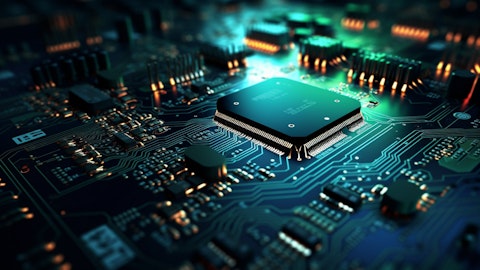Hindsight, they say, is 20/20. Looking back at past predictions, especially those made by prominent figures in the investment world, can offer valuable insights into market dynamics and the evolution of technology. In the case of NVIDIA (NVDA), a stock that has seen meteoric rise, revisiting past assessments can shed light on the challenges of predicting future market trends, even for seasoned investors.
On August 5th, several media outlets reported famous activist hedge fund Elliott Management’s statements about AI hype and NVDA bubble. We summarized those statements in an article:
“Billionaire Paul Singer’s Elliott Management has reportedly said in a latest letter to investors that mega-cap AI tech stocks are in “bubble land” and Nvidia is “overhyped.” The fund said in its letter that it’s skeptical about the notion that technology companies will keep buying AI chips in high volumes in the future, adding that AI is “overhyped with many applications not ready for prime time”. It also claimed that many AI use cases are “never going to be cost-efficient, are never going to actually work right, will take up too much energy, or will prove to be untrustworthy.” The fund reportedly said in its letter that AI is in effect software that has failed to deliver “value commensurate with the hype”.
The $66 billion Elliott Management founded by billionaire Paul Singer, who is one of the most feared activist investors in the US, said there are “few real uses” of AI other than “summarizing notes of meetings, generating reports and helping with computer coding”.

Paul Singer of Elliott Management
Elliott’s letter was dated July 30th and predicted that the AI bubble will burst when NVDA ” has bad numbers and breaks the spell.”. Here is an excerpt from that letter:
“Speaking of NVIDIA . . .
Why does Elliott believe that the Magnificents, and NVIDIA in particular, are in bubble land? We will spare you another lengthy treatise on AI, except to say that it is overhyped, with many applications not ready for prime time. And further, we think a good proportion of the purported use cases are never going to be cost efficient, are never going to actually work right, will take up too much energy, or will prove to be untrustworthy. But right now, the scramble for facilitating super-chips, together with the compulsion to jump on board the hype train, is causing a radical skew in the market values of the anointed.
It is not possible now to determine with much accuracy when AI’s “day” will really arrive. So far, generative AI is not creating the much-predicted productivity miracle, and there are few real uses aside from areas such as summarizing notes of meetings, generating reports and helping with computer coding. Nevertheless, generative AI has sparked a veritable arms race among the “Big Four” hyperscalers (Meta, Google, AWS, and Microsoft), driven by the hope that NVIDIA’s graphics processing units (GPUs) will be the dominant currency in the race to unlock AI’s supposedly boundless potential.
This year, the Big Four plan to spend an estimated $160 billion on datacenter capex focusing on GPUs, a capex level that is 50% more than they spent in 2023 and nearly 3x the level they spent in 2018-2020 before generative AI enthusiasm sparked the great GPU arms race. Consensus expectations assume that these capex levels will remain elevated for the foreseeable future. Yet, in the absence of finding a “killer app” or significant ROI realization, will these hyperscaler customers continue to buy NVIDIA GPUs at record levels? We are skeptical and believe the road ahead may prove choppier. If we look past the hype and the hysteria of AI “transforming human life,” what is left is a software-development project that so far is not producing value commensurate with the hype (except for what we believe to be very bubbly stock market value).”
Interestingly NVDA shares hit a low of $92 on August 5th when the Elliott news came out. The stock returned more than 50% since that day, so the bubble must be 50% bigger now. NVDA posted a 17% quarter-over-quarter revenue growth rate, so it doesn’t look like the “AI bubble” is popping anytime soon. In the meantime, Elliott Associates returned 3.9% during the third quarter.
Our research director shared his views on NVDA’s earnings results here. He thinks NVDA stock can reach $170 within 3 months. While we acknowledge the potential of NVDA as an investment, our conviction lies in the belief that some AI stocks hold greater promise for delivering higher returns and doing so within a shorter time frame. If you are looking for an AI stock that is more promising than NVDA but that trades at less than 5 times its earnings, check out our report about the cheapest AI stock.
READ NEXT: 8 Best Wide Moat Stocks to Buy Now and 30 Most Important AI Stocks According to BlackRock.
Disclosure: None. This article is originally published at Insider Monkey.





